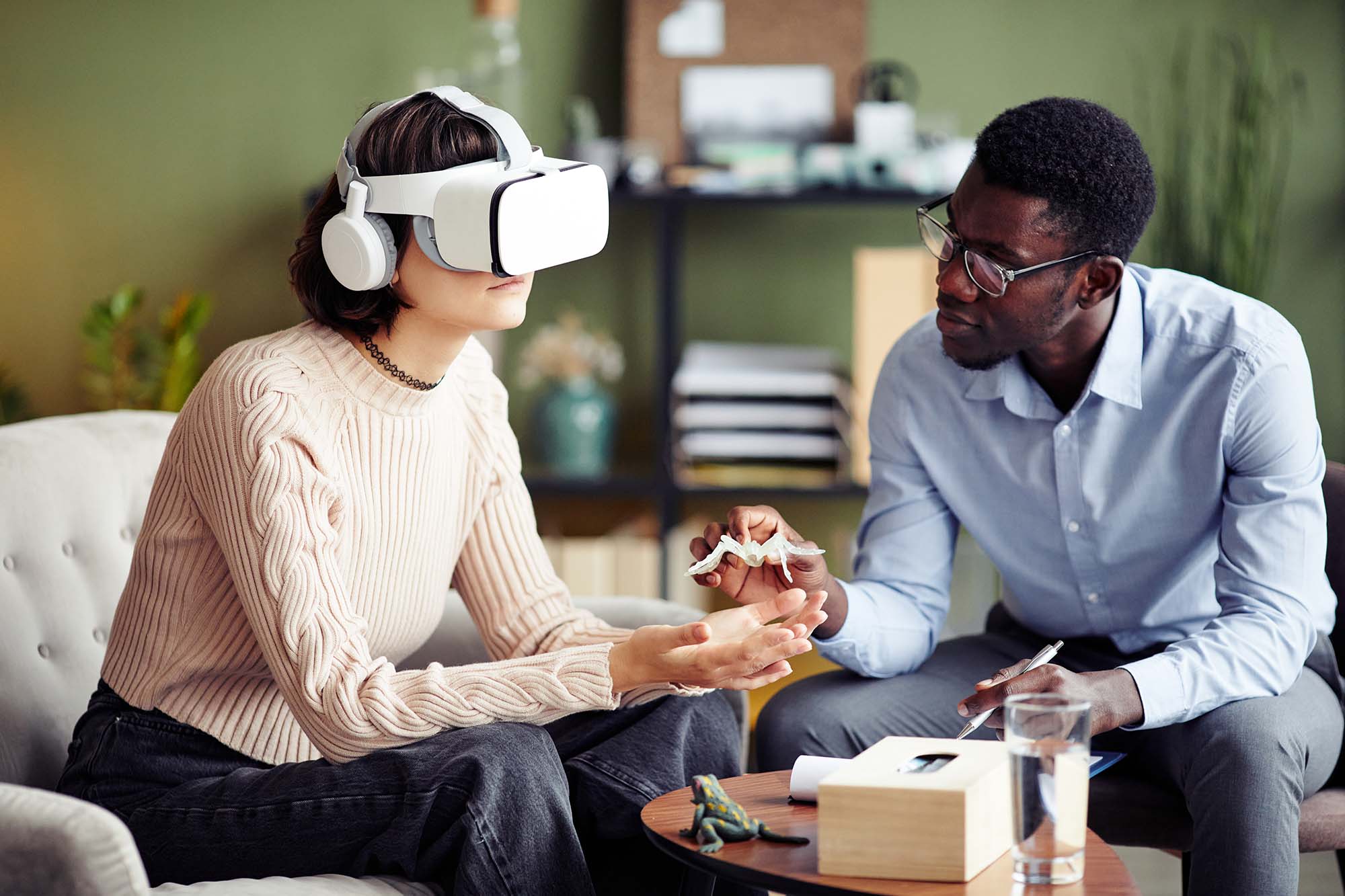Exposure therapy, in which patients gradually face the things and situations they fear, is among the most effective treatments for anxiety disorders, yet it remains underutilized (Pittig, Kotter, & Hoyer, 2019). Some patients may find it too intimidating while clinicians may struggle with the lack of control and the challenge of repeatedly creating experiences such as flying in a plane or talking in front of a large crowd.
A new paper in Clinical Psychological Science highlights virtual reality exposure therapy (VRET) as an effective option and explores how it may work. The research suggests that patients may be more willing to try virtual reality as they can be assured it is not actually real, and clinicians can manipulate the simulated experiences.
“We see when patients do the exposure in virtual reality that they get better and that they can also generalize their behavior to the real world,” said Katharina Meyerbröker, one of the paper’s authors and associate professor at Utrecht University, in an interview with APS.
The most dominant current theory about why exposure therapy works has to do with expectancy violation: When the expected, negative outcome (like dying in a plane crash or being ridiculed after public speaking) doesn’t happen (you land safely or receive a warm reception), it helps drive out that fear. This seems hard to achieve with VRET, as patients know the experience is fake. However, previous research has theorized that VRET is still effective because patients may subjectively feel as if the simulation is real, despite knowing objectively otherwise, or because feared internal reactions (such as losing control or not being able to cope) can still be overcome.
“The contemporary theory on explaining the effects is not really able to account for all aspects of virtual reality exposure,” Meyerbröker said.
So Meyerbröker and colleagues started looking for other explanations.
Read more on this topic in Exposure Therapy Challenges Patient Expectations
Relatedly, emotional processing theory suggests that fear is represented as a structure in memory, and, once that structure is activated, the fear memory can be modified. It seems possible that VRET works in this way as it has been shown to both activate the fear structure and reduce fear. For patients with post-traumatic stress disorder (PTSD), for example, activating memories can help reduce their anxiety.
“They also know it’s not real, but they are kind of reliving that,” Meyerbröker said. “I personally think it’s got to do with learning from the experience.”
This ties into self-efficacy theory, which says that exposure therapy works by increasing a patient’s belief in their ability to handle anxiety-provoking situations. “What you will learn is that you are able, capable to manage that situation,” Meyerbröker said. “The expectancy violation, that is more about the fear [of] what will happen. This is more about the confidence you have in your own actions.”
VRET can also allow for fine-tuned manipulation as that confidence grows. For example, a patient with social anxiety might first give a presentation to virtual avatars who are kind and encouraging and then graduate to presenting to avatars who are visibly bored or unreceptive. Meyerbröker said it could also work well to start with several virtual reality sessions and then blend treatment with real-life exposure.
Still, there are limitations of VRET. It might not work for all PTSD patients, as it is difficult to create virtual realities that match their specific experiences. Panic disorder is easy to recreate by exposing patients to different bodily sensations without the need for virtual reality. Creating virtual reality environments is expensive, but Meyerbröker said she is hopeful that costs will come down in the future. Virtual reality goggles have already become much cheaper, and there are phone apps and YouTube videos for certain environments. There are also augmented reality options where a tablet can project a spider walking across your hand, for example.
Understanding the mechanism—or mix of mechanisms—behind VRET is necessary to help clinicians troubleshoot when the therapy doesn’t appear to be working. A patient might be doing something to avoid the tension they experience—such as telling themselves it’s not real or simply closing their eyes—but that tension is necessary for the therapy to work.
“If we understand what the mechanism is, we can tailor it more individually,” Meyerbröker said.
References
Pittig, A., Kotter, R., & Hoyer, J. (2019). The struggle of behavioral therapists with exposure: Self-reported practicability, negative beliefs, and therapist distress about exposure-based interventions. Behavior Therapy, 50(2), 353–366.
Scheveneels, S., Engelhard, I., & Meyerbröker, K. (2024). Opening the black box: The underlying working mechanisms in virtual-reality exposure therapy for anxiety disorders. Clinical Psychological Science, 0(0).


